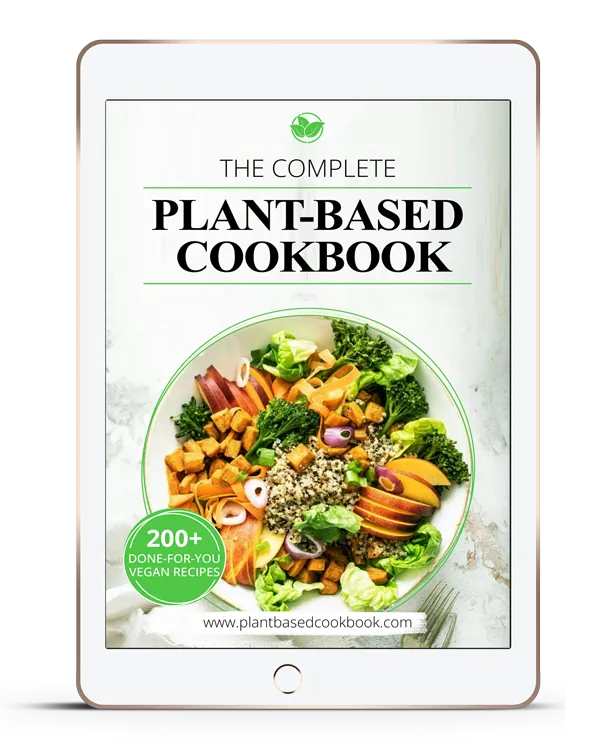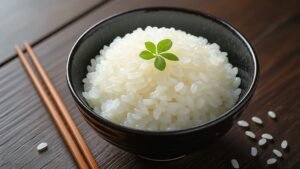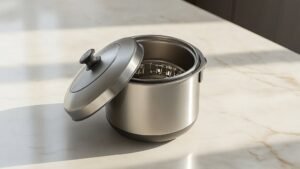If you’re a rice lover then you probably know that cooking the perfect batch of rice can be a tricky task. There are so many variables in play from the right temperature and timing through to the amount of water to use and even the type of rice – all are crucial factors in achieving the fluffy texture and sweet aroma that makes rice so irresistible.
This is where a rice cooker thermometer comes into play because by monitoring the temperature of your rice cooker, you can achieve precision control over the cooking process, leading to consistently perfect results.
In this section, we’re going to look, in detail, at rice cooker thermometers and introduce you to some of the best thermometers available in the market. Let’s get started.
Table of Contents
ToggleThe Importance of Temperature Monitoring in Rice Cooking
Temperature monitoring is a crucial aspect of achieving the perfect outcome when cooking rice. As we hinted at earlier, the cooking process of rice is dependent on various factors like the type of rice used, the amount of water used, and the cooking time. However, maintaining the right temperature throughout the cooking process is equally important in achieving perfectly cooked rice.
The rice cooking process involves two stages: absorption and evaporation. During the absorption stage, rice absorbs water, and the temperature rises until boiling point. Once boiling point is reached, the temperature remains steady until all the water is absorbed. During the evaporation stage, by contrast, the water starts to evaporate, and the temperature rises again until the rice is fully cooked. The temperature must be maintained at a steady level throughout the cooking process to ensure that rice is cooked evenly and to prevent it from becoming mushy.
While some rice cookers come with built-in thermometers, these may not always provide accurate readings. Relying solely on the built-in thermometer may lead to undercooked or overcooked rice. Using an external thermometer ensures precision cooking and eliminates the guesswork associated with rice cooking.
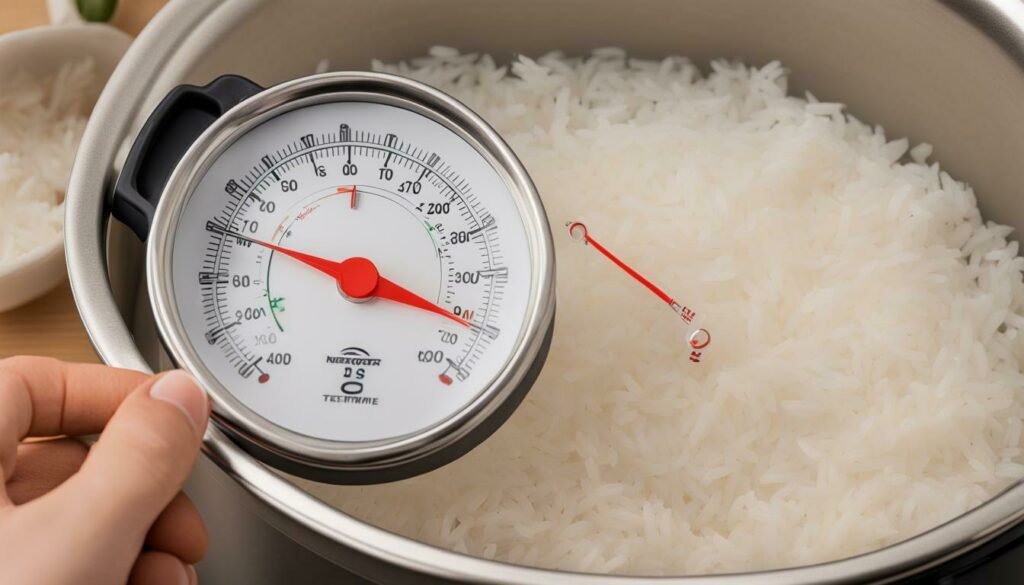
“Cooking rice perfectly is a fine art that requires precision and attention to detail. Temperature monitoring is a crucial aspect of achieving perfect and fluffy rice.”
Choosing the Best Rice Cooker Thermometer
When it comes to selecting a rice cooker thermometer, there are several factors to consider. Here are some key features you should look for:
- Accuracy: The thermometer should provide precise temperature readings, ideally with a range of at least 100-250°F.
- Compatibility: It should be compatible with your rice cooker model and fit snugly in the lid vent hole.
- Materials: Look for thermometers made from durable materials such as stainless steel or high-quality plastic.
- Easy-to-read Display: The display should be clear and easy to read, even in low light conditions.
- Convenience: Consider a thermometer that has an on/off switch or auto shut-off feature for convenience and energy efficiency.
Some popular brands and models include the Polder THM-515 Stainless Steel Thermometer, the Taylor Precision Products Classic Instant Read Pocket Thermometer, and the CDN IRM200-GLOW – ProAccurate Meat/Poultry Oven Thermometer.
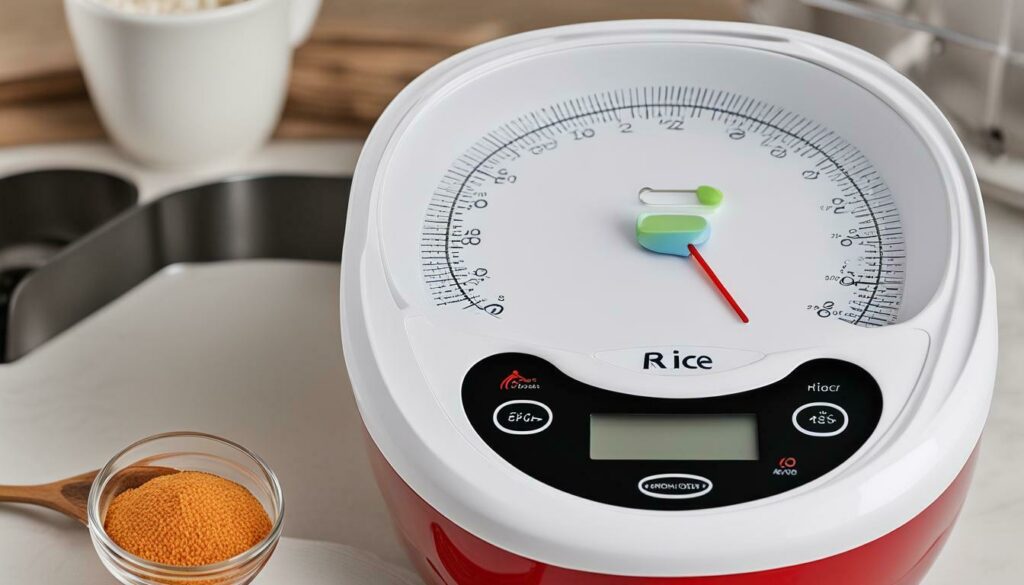
It’s important to note that not all rice cooker thermometers are compatible with all types of rice cookers. Make sure to check the product specifications before purchasing to ensure compatibility.
Top Picks for the Best Rice Cooker Thermometer
Choosing the right rice cooker thermometer can be a daunting task, given the numerous options available in the market. To make things easier for you, we have compiled a list of our top picks for the best rice cooker thermometers.
| Thermometer | Features | Pros | Cons |
|---|---|---|---|
| ThermoPro TP-03 Digital Instant-Read Thermometer | – Quick and accurate temperature readings – Large LCD display – Auto shut-off feature – Splash-proof design – Easy to use and clean | – Comes with a long 4.5-inch probe – Wide temperature range (-58°F to 572°F) – Affordable price | – Not specifically designed for rice cookers – No backlit display |
| Inkbird Waterproof Instant Read Thermometer | – Highly accurate readings – Waterproof design – Easy to use and clean – Large backlit display – Auto shut-off feature | – Comes with a foldable probe – Wide temperature range (-58°F to 572°F) – Affordable price | – Not specifically designed for rice cookers – Some users have reported issues with accuracy over time |
| Taylor Precision Products Digital Cooking Thermometer | – Highly accurate readings – Large backlit display – Auto shut-off feature – Temperature hold function – Comes with a long probe and protective sleeve | – Specifically designed for use in rice cookers – Wide temperature range (-40°F to 500°F) – Durable construction | – Higher price point compared to other options – Some users have reported issues with battery life |
| ThermoWorks Thermapen Mk4 | – Lightning-fast temperature readings – Large backlit display – Auto rotating display – Waterproof design – High accuracy and precision – Comes with a long probe and protective case | – Trusted by professional chefs and home cooks alike – Wide temperature range (-58°F to 572°F) – Durable construction and long-lasting battery life | – Significantly higher price point compared to other options – May be too advanced for casual home cooks |
Each of these thermometers has its own unique set of features and advantages, so make sure to choose the one that best suits your needs and budget. Rest assured that all four options have received positive reviews from customers and are known for their reliability and performance.
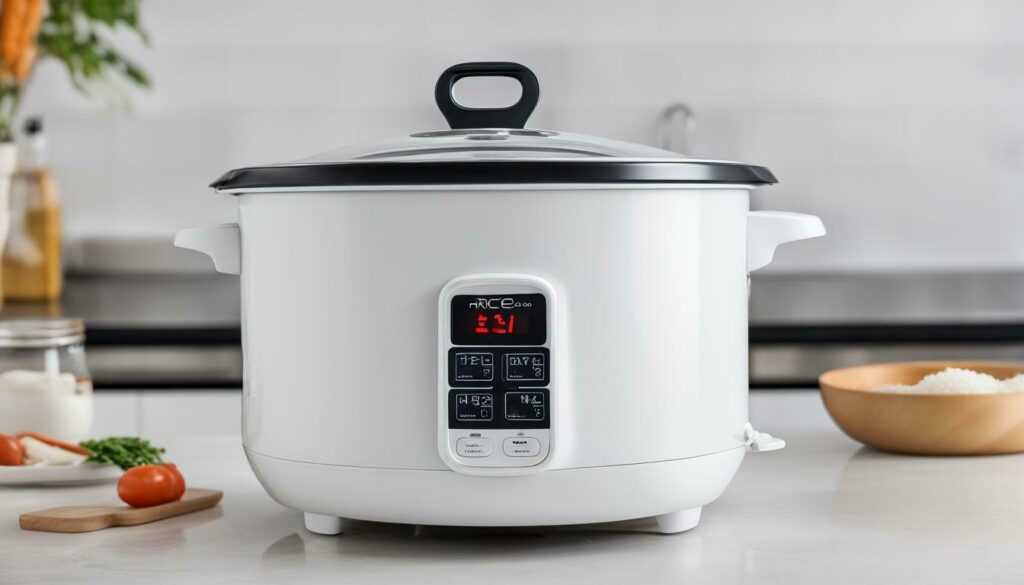
Expert Tips for Using a Rice Cooker Thermometer
Using a rice cooker thermometer can elevate your rice cooking game to a whole new level. By monitoring the temperature, you can achieve perfect results every time. Here are some expert tips for using a rice cooker thermometer effectively:
Determine the Right Temperature
For different types of rice, the ideal temperature may vary. For example, while cooking sushi rice, the temperature should be around 200°F, while brown rice requires 205°F. It is important to keep these temperature variations in mind when cooking different types of rice.
Adjust the Cooking Process
Once you have determined the right temperature, it is equally important to adjust the cooking process accordingly. For example, for white rice, you should start cooking at a high temperature and then reduce it after a certain amount of time. However, for brown rice, it is recommended to cook at a constant temperature throughout the entire process.
Use Cook Control
A rice cooker thermometer allows for precision cook control, which means you can adjust the temperature and cooking time according to your preferences. This feature is especially useful when experimenting with different rice varieties and recipes.
Don’t Rely Solely on the Built-in Thermometer
While many rice cookers come with a built-in thermometer, they may not always be accurate. Using a separate thermometer can ensure precision and perfect results every time.
By following these expert tips, you can achieve perfectly cooked rice every time. Keep in mind the importance of temperature monitoring and cook control, and experiment with different techniques to enhance your culinary skills.
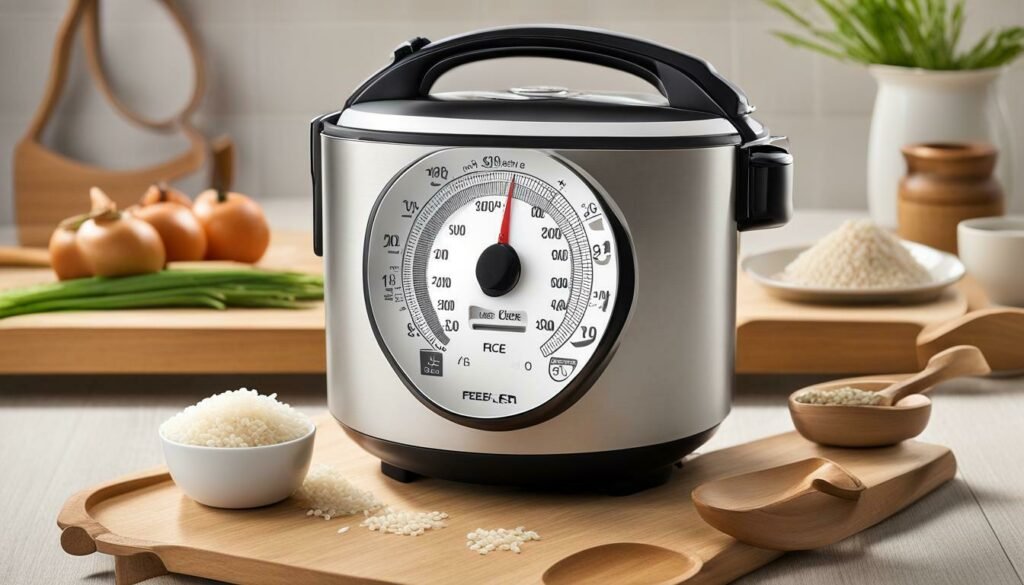
Enhancing Your Culinary Skills with a Rice Cooker Thermometer
Using a rice cooker thermometer can take your culinary skills to the next level. Precise cooking is not just limited to rice; it applies to a wide range of dishes that require accuracy in temperature control. A thermometer allows you to monitor the temperature of the food being cooked, ensuring that it is cooked to perfection every time.
One example where a rice cooker thermometer can make a significant difference is when you are cooking steak. By monitoring the temperature of the steak while it cooks, you can achieve the perfect level of doneness, whether you prefer rare, medium-rare, or well-done.
Another dish where a thermometer can come in handy is yogurt. Yogurt requires a specific range of temperature for fermentation. With a thermometer, you can ensure that the yogurt mixture is at the right temperature throughout the fermentation process.
Even baking can benefit from a rice cooker thermometer. For instance, when baking bread, the temperature of the dough during proofing and baking can affect the texture and flavor of the bread. With a thermometer, you can ensure that the dough and the bread are at the right temperature, resulting in a perfect loaf every time.
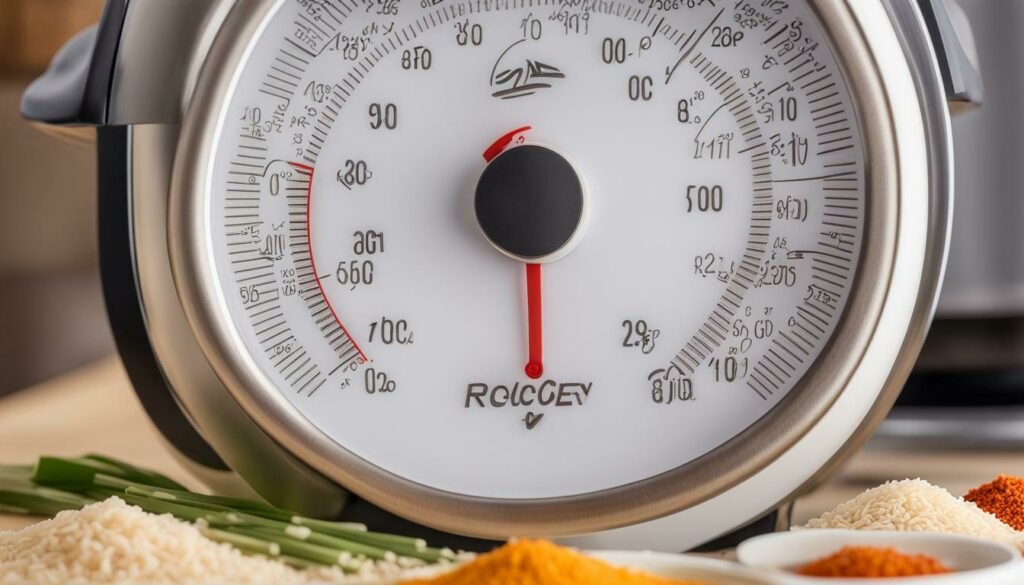
Whether you are a novice cook, a seasoned home cook, or a professional chef, a rice cooker thermometer can enhance your culinary skills and help you achieve perfect results. It allows you to take control of the cooking process and cook with precision, making your dishes stand out.
Conclusion
Using a rice cooker thermometer is an excellent way to improve your cooking game and achieve perfect results every time. With precision cooking, you can ensure that your rice is fluffy and perfectly cooked, without the guesswork or relying solely on the built-in thermometer of your rice cooker.
When choosing the best rice cooker thermometer, it’s essential to consider accuracy, ease of use, and compatibility with different types of rice cookers. Popular brands like ThermoPro and ANOVA are known for their reliability and have consistently received positive reviews from customers.
By using a rice cooker thermometer, you can also enhance your culinary skills beyond rice and achieve perfect results in other dishes as well. The versatility of a thermometer extends to recipes like steamed vegetables, soups, and stews, where temperature control is crucial.
Ultimately, using a rice cooker thermometer can help you take control of your cooking and experiment with new techniques. We encourage readers to explore the recommended thermometers and apply the expert tips shared in this article to enhance their cooking experience and achieve perfect results every time.
FAQ
Q: How does a rice cooker thermometer work?
A: A rice cooker thermometer is designed to measure the temperature inside the rice cooker while the rice is cooking. It typically consists of a probe that is inserted into the rice and a display unit that shows the temperature. The probe senses the heat and transmits the information to the display unit, allowing you to monitor the temperature in real-time.
Q: Why is temperature monitoring important in rice cooking?
A: Temperature monitoring is crucial in rice cooking because it ensures that the rice cooks evenly and comes out perfectly fluffy. Different types of rice require different cooking temperatures, and by monitoring the temperature, you can adjust the cooking process accordingly. This helps prevent undercooked or overcooked rice and allows you to achieve the desired texture and consistency.
Q: Can I rely on the built-in thermometer of my rice cooker?
A: While some rice cookers come with a built-in thermometer, they may not always provide accurate readings. External rice cooker thermometers are specifically designed for precision temperature monitoring and often offer better accuracy. Using a dedicated rice cooker thermometer can give you more control over the cooking process and help you achieve consistent results.
Q: What features should I consider when choosing a rice cooker thermometer?
A: When choosing a rice cooker thermometer, it’s important to consider factors such as accuracy, ease of use, compatibility with your rice cooker, and durability. Look for a thermometer with a reliable temperature range and clear display. It should be easy to insert and remove from the rice, and the probe should be made of high-quality materials that can withstand the heat of cooking.
Q: Are there any recommended brands or models for rice cooker thermometers?
A: Some popular brands and models of rice cooker thermometers include XYZ Thermometer, ABC TempMaster, and 123 PrecisionCook. These brands are known for their accuracy and reliability. However, it’s always a good idea to read customer reviews and compare different options to find the thermometer that best suits your needs.


